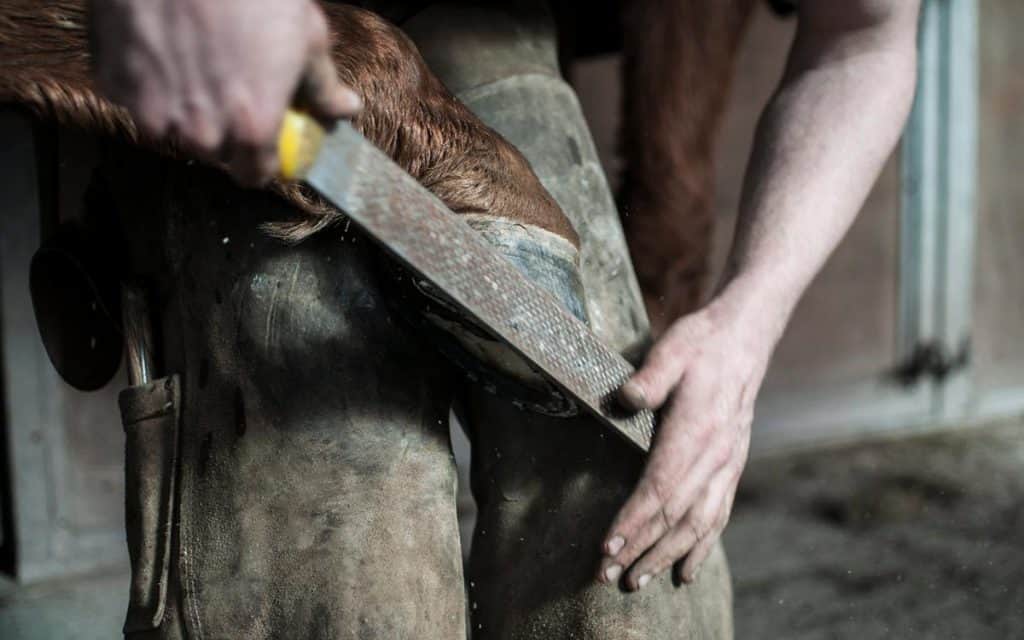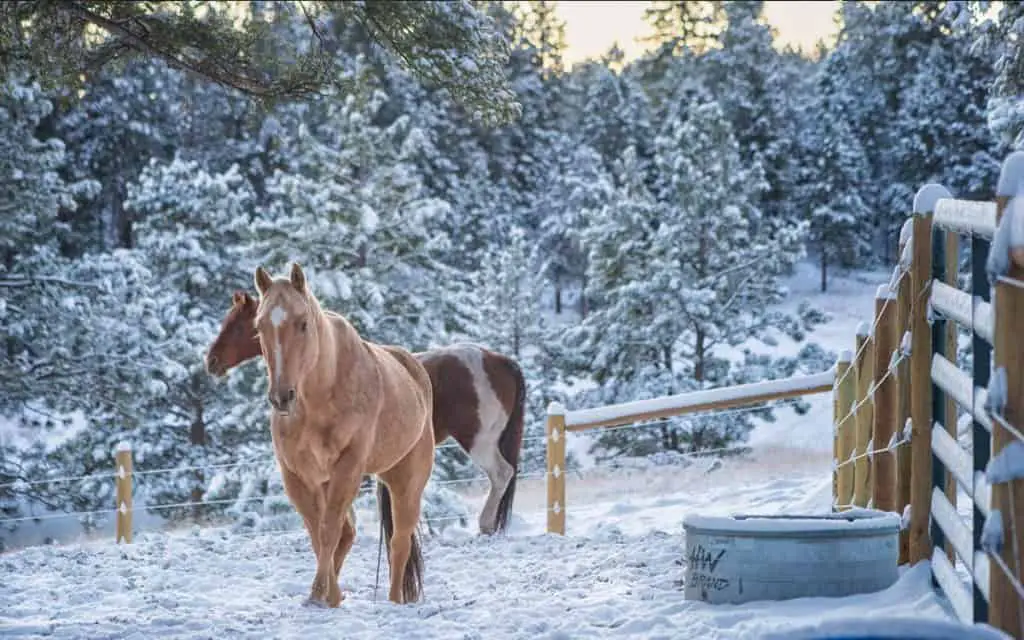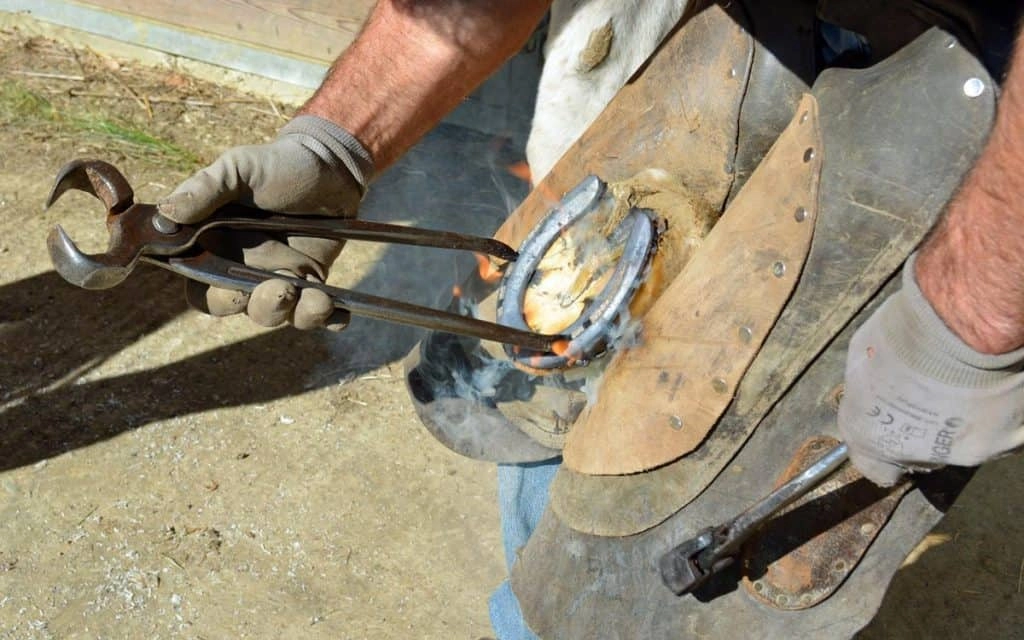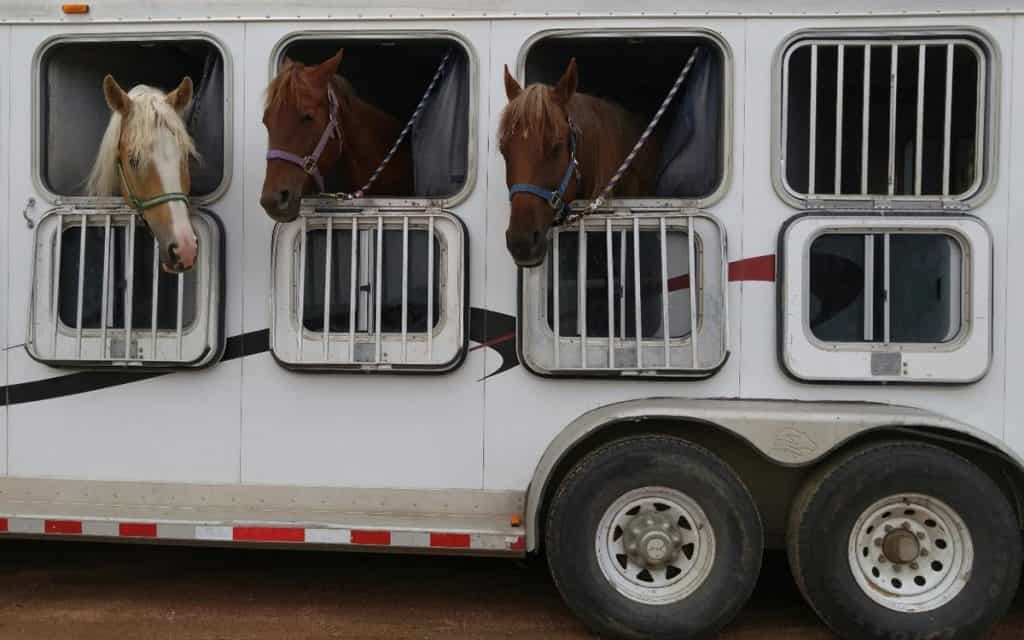Think of the horse hooves as the foundation of a home. Your horse, with all its kilos, stands on it, and all its functions depend on that support and balance. Healthy horse hooves need to be strong and healthy for the wellness of the animal. If the hooves get damaged, the injuries could spread to the legs and other areas of the animal’s body. So how do you keep your horse’s hooves healthy, functional, and fabulous?
My first filly was a thoroughbred with their typical delicate hooves. For their athleticism, speed, and grace, one can think of such animals as super-ponies, forgetting the critical weakness that is their hooves. Some will scorn at the idea of regular farrier visits, but a severe bacterial infection of the hooves nearly left me without a horse, and I knew then that I had to pay close attention to the animal.
Occasional trimming and picking don’t cut it. Turns out TB hooves absorb lots of moisture and lose all of it in dry conditions, leaving them weak and susceptible to chipping and infections. Other factors come into play, too, from diet to exercise, shoeing, and the environment.
A compressive hoof care plan would entail:
1. Understanding the hoof anatomy
Knowing the functions and structure of the horse foot can help to better take care of it and detect conditions early on. Horse hooves have complex formations from the outside to the inside.
The outer hoof wall: The hardy outer wall comprises of keratinized epithelial cells. Although it doesn’t have blood vessels and nerves, the hoof wall is a continually growing hoof section. It supports the weight of the horse and protects the inner parts within. Cracks and chipping on this part can leave the internal organs susceptible to damage.
Coronary band: Atop the hoof wall is the coronary band that acts as the nutritional source for the hoof wall. It packs an ample blood supply, and injury to this part can damage the footwall.
Close to the coronary band is the periople that similarly safeguards the hoof wall. It comprises of new tissues that grow and harden into the hoof wall.
The inner hoof wall: A sensitive layer lies inside the hoof wall. It holds several leaf-like laminae, which attach to the coffin bone that defines the shape of the foot. These structures bear a significant portion of the horse’s weight.
The sole and frog: Under the hoof is the sole, which hardly touches the ground because of its concave shape. Although it consists of keratin, the sole is a little more sensitive than the hoof wall.
There is also the frog, appearing as a V-shaped structure near the heels. Its primary function is to absorb shock and aid in blood circulation in the hoof.
The inner framework of horse hooves consists of:
- The coffin bone: This is the bottom bone near the frog and is housed in the hoof wall. The prominent bone provides shape and structure to the hoof wall and has the tissues that feed the laminae.
- The digital cushion: This lies below the coffin bone and near the back of the hoof. It comprises of cartilaginous material that helps to absorb shock in the foot. If damaged, the digital cushion might never regenerate.
- Navicular bone: This is a small bone behind the coffin bone, and it helps to stabilize the latter, especially when the horse is standing on uneven ground. Assisting with the movement and support of the navicular bone are two tendons; the deep digital flexor and extensor tendons.
2. Schedule farrier visits as often as your horse’s needs
Just like human nails, horses’ hooves grow fast too, outpacing the rate at which they are worn out in the animal’s natural movements. A good trimming helps to keep the hoof capsule in proper balance for equal weight distribution. Even with shoeing, your horse needs regular trimming.
Consider a trimming cycle span of not more than eight months.

Toe overgrowth and imbalanced hooves often snowball into injuries for the horse. The stress on one side leads to cracks and chips and can cause separations that put further strain on the joints and tendons. This could then develop into muscle sprains.
Remember that your horse’s specific needs might vary greatly depending on the physical activity of the horse and the weather. For instance, hooves grow faster in warmer weather than during the winter.
But trimming is not the only reason for farrier visits. These specialists can also help to check for abnormal conditions that might have escaped your observation. Farriers excel at identifying early onsets of thrush or potentially damaging chips and cracks, under-run heels, bruises, and white line diseases.
3. Maintain high hygiene
You should clean your horse’s hooves regularly, notably after a ride, or a work session. A condition such as a thrush arises and thrives in unsanitary conditions. This kind of bacterial infection is rampant in hooves in wet conditions and targets the frog and heel bulbs.
Thrush creates voids in the hoof wall and spreads to the frog. You will notice a foul odor emanating from the hoof, or it will assume a chalky greyish appearance. In severe cases, a black gooey material oozes from the foot.
Regular trimming at the farriers can help to cut the infected area away and expose the thrush to oxygen, where the bacteria cannot survive. Nonetheless, you can do your bit at home to prevent the condition by maintaining a clean environment.
Check your horse feet: This should be a regular at-home hoof care routine. Check to ensure that the hooves are not packed with mud or rocks that can worsen conditions such as thrush or widen cracks. This routine will help to reveal other abnormalities, and you can then take immediate corrective action.
Pick out the horse’s feet: It’s a basic hygiene routine that I found compelling, especially for the TB hooves with their susceptibility for chipping. Removing stones and sticks lodged in the feet can help to reduce the risk of bigger cracks and chipping. Scrape off soil and small particles from the hoof sole using a brush for a satisfyingly clean hoof.
- Remove debris from his feet before each ride so as not to add weight to the crack-inducing items lodged in the hooves.
- After pasturing, remove the pebbles and sticks that might have gotten in there during the horse’s movements outside.
- Check and remove further objects before stabling at night.
- The next morning, remove manure from the feet before turnout and lookout for symptoms of thrush.
4. Establish normalcy through regular inspections
Apart from thrush, horse hooves are prone to other conditions such as abscess, punctures, and cracks. A routine inspection at home can help to identify and prevent these problems. You will also be able to seek the vet’s help before a condition worsens.
Check for abscess: Abscess is an infection that targets the soft tissue of the hoof and can lead to lameness in severe cases. The condition results from bruises and puncture wounds. On the other hand, radical wet-dry cycles can also cause abscess when the white line expands and contracts to let in bacteria and then trap them in there.
Signs to watch out for abscess include lameness on the affected limb. Sometimes the condition causes swelling in the lower leg. Other symptoms may be too subtle and will require the expert judgment of an experienced farrier. By using hoof testers, the experts will pinpoint exactly where the infection is.
Prevention measures you can take against abscess include removing debris such as nails, sharp stones, and broken glass from the horse’s paddock and fields.
Check for bruises: Bruising on horse hooves mostly happens on the outer wall, the sole and the frog. Bruises are caused by a heavy impact on stones and hard ground. If you work or ride your pony on had terrain, your animal is at a high risk of bruises.
Bruises are also a common occurrence in thoroughbreds. As was the case with my first filly, wet and dry conditions really impacted the hooves, making them weaker and prone to bruising. It was always worse in the summer when the animal had to continually stomp its feet to shake off flies.
Symptoms of bruising include lameness on the affected foot. Your farrier might help to identify other low lying symptoms and implement protective measures such as shoeing or shoeing with a pad.
You can prevent bruising and achieve healthy hooves by avoiding riding on rocky terrains. One other solution I found incredibly helpful for the soft TB hooves was the use of hoof hardener products. Find a product that can simultaneously help to keep out moisture and harden the bottom of the foot.
Check for Cracks: Horizontal cracks are a sign of damage caused by heavy impact and abscess. Horizontal cracks are no cause for alarm, but vertical cracks will need a farrier’s inspection. Vertical cracks result from imbalanced hoof angles and excessive hoof flare.
With deep cracks, bacteria can enter the wall and access the sensitive tissues of the hoof. The clefts can also cause hoof separation. Both severe bacterial infection and hoof separation can lead to lameness. You can prevent the condition by adopting proper nutrition and a regular trimming schedule for your horse.
5. Guard against excessive moisture and ice
Wet feet are bad for the horse. If you bathe your horse frequently, chances are their hooves are prone to cracks. When in wet, hooves swell and soften, but when the wetness dries away, the trotters dry and contract. This wet-dry cycle leaves the hooves weaker and prone to wear.
Moisture is also a hoof health risk for:
- Horses that walk through the morning dew
- Horses that are kept on damp beddings
- Horses that stand in the mud for long
You can reduce the moisture in your horse’s feet by limiting exposure to wetness. Instead of soaking during baths, resort to sponge baths. Also, ensure that the washing area has no mud or puddles to minimize the risk of the horse standing on moisture for too long.
You don’t have to soak the hooves in the summer as a cooling measure. The hoof is designed to adapt suitably to both wet and dry conditions. It is the temperature fluctuation that is bad for them.
For horses that stay out in damp and muddy weather, ensure that they stand on a dry place, possibly in a shed layered with a properly drained gravel pad.
Other ways to take care of the moisture problem hooves include:
- Reducing summer turnout time by a few hours, so the horse doesn’t spend too much time in the dewy night time.
- Using a non-drying hoof dressing to prevent moisture absorption
- Reducing the number of times you bathe your horse
- Adopting a regular shoeing schedule in the summer
- Avoiding turnout in wet and muddy conditions
- Applying hoof coating to help with moisture retention in the summer
- If cracks have already appeared from the wet-dry cycle changes, use a hoof sealant to keep off external moisture and preserve internal moisture
Hoof care in the winter
In the winter, avoid riding the horse on frozen terrains. The impact of hooves on frozen ground can lead to concussions that cause hoof cracks. Additionally, with the reduced traction on ice, horses can slip and suffer severe injuries or even fall into ice and get submerged.

If you must turn out your shod horse in the winter, spreading sand or cat litter on the path can help with traction. Lead them to safe areas away from frozen water or streams.
Horse hoof winter care tips:
- Avoid ice balls and slippery paths
- Clean off snow and dirt from the horse’s feet
- Remove sharp items (before winter) that might get buried in snow
- Check fences and remove wires that might be buried in snow
- Provide quality bedding for the long stretches of stabling in the winter
- Proper stall footing is also important
- Clean stall often to ensure dry footing
- Consider padding if riding on frozen roads
- You can use old carpets as walkways for traction
6. Adjust Nutrition
A horse’s healthy hooves depend on how he is feeding and what he is feeding on. Hooves, just like human hair or skin, require nutrients for strength and optimal growth and repair. Have the pony on a consistent and timely feeding program. Live grass and mineral supplementation often yield excellent results on their feet.
When your horse’s overall health is declining due to top nutrient deficiency, you will notice signs such as cracking and chipping in the hooves. These signs may be subtle, but not for cases of severe calorie and nutrient deficit.
Malnutrition is a health risk in horses, but obesity can also lead to diseases such as laminitis. The condition is an inflammation of the laminae, which are the soft leaf-like structures that attach the coffin bone to the hoof wall.
Infection and damage to laminae cause unbearable pain and can lead to substantial injury to the coffin bone. Laminitis limits the mobility of your horse and can even be fatal in severe cases. Although it has other causes, over-feeding the horse on grain is the main culprit for laminitis.
For building super healthy hooves, your horse needs a balanced diet and a steady stream of nutrients. Horses mostly require green pasture that packs the right amount of proteins, vitamins, and minerals.
Minerals: You can speak to your vet before supplementation, but the required minerals include biotin, calcium, niacin, zinc, and phosphorous.
Proteins: Since 90 % of the footwall consists of protein in dry matter, this nutrient is very essential to have in a horse’s diet. It contains the amino acids cysteine, cysteine, and methionine, which help in hoof growth. Protein deficiency can lead to a reduction in hoof growth, or splitting and cracking.
Fats: Too much fat can lead to obesity and laminitis. But the right amount of fat is critical for healthy horse hooves. Fat helps in moisture retention in hooves and limits the external absorption of water. In the process, bacteria and fungi are also stopped from entering the horse’s hoof horn.
Compared to live grass, hay contains fewer amounts of omega-3 fatty acids. Thus, for a horse that thrives on hay and grain, supplementation for fatty acids is critical.
Vitamins: Consider doing a soil analysis of your farm to ascertain whether it packs the right amount of vitamins and minerals. Biotin is the most critical vitamin for hoof growth. It weaves cells and keeps them together. You can put your horse on biotin supplements if you have low-grade grass on your farm.
7. Give your horse a regular workout
Exercise is critical to equine health. Horses are built for power and motion, so let them work it out. When they move around more, blood circulates faster to their extremities, including the living parts of the hooves. The circulation enables nourishment of the hoof capsule, helping it to grow stronger and healthier.
A little stress also helps to harden the hooves. I have seen plenty of show horses that are confined to a stall most of the time; they generally have weaker feet compared to the ones that run around every now and then. But, remember that the exercises have to be done on good terrain, or they would lead to cracks and chips.
8. Shoeing is necessary for healthier horse hooves
The horseshoe protects the hoof wall. Shoes are especially ideal for horses that race or jump on harsh terrain, helping to shield from hoof concussions and the infections that might result from that. Mud is another factor that calls for protection with horseshoes. Just like rocks and sticks, mud weakens the hooves when it dries in there.

Other reasons to shoe your horse include:
- As a treatment measure against infections or for posture correction
- For traction on slippery terrain
- Stopping of ammonia infections from urine-soaked hay
9. Watch out for the dangers of shoeing
It’s good to point out that there might be negative consequences to excessive shoeing. If none of the above-stated shoeing reasons affect your horse, then you can leave them barefoot to avoid the risk of injuries from horseshoe nails and stepping on clips. Your farrier should help you decide.
Caring for shod horses:
- Watch out for half pulled or shifted shoes; they have bent or moved to one side, posing a danger to the sensitive hoof structures
- You can also place a rubber padding between the hoof and the shoe for a comfortable cushioning
Shoeing tips for the winter
- In the winter, get your farrier to design appropriate shoes for the icy conditions
- Decide to go with shoes only if you will be doing a lot of riding in the cold months
- Be wary of the risk of bruises from frozen mud
- Use anti-snowball pads
10. Master how to remove the horses’ shoes
In an emergency situation, such as when risen clinches or shifted shoes cause enormous pain to your animal pain, you might not have time to wait for a farrier. It’s imperative then that you learn the process of removing a horseshoe to save the animal from pain and hoof damage.
- Here is what to do in horseshoe emergencies:
- Crawl under your horse and position yourself such that the foot is supported on your knees
- Remove the clenches by knocking them off with a hammer
- Pull out the nails using pliers or a nail puller
- Once you get all the nails out, the shoe will fall off
11. Protect hooves during transportation
Horses are prone to injuries in the lower limbs during transportation. Some of the injuries directly affect the hoof structure or the entire animal body. Protecting hooves in transportation can help to prevent falling, trapping, overturned trailers, and the resulting damages to hooves.

Before transportation, it would help to fit the horse with travel boots or put padding between the hooves and the shoes. These precautions aid to protect the coronary band from overreach injuries. Horses tend to step on themselves when struggling to maintain balance, and that can damage the growing coronary band.
Let’s finish this off…
For healthy horse hooves, your caring plan needs to consider the bigger picture, given the diverse factors that can impact hoof health. It takes the pooled effort, including yours, your farrier and the vet’s to get it right.








